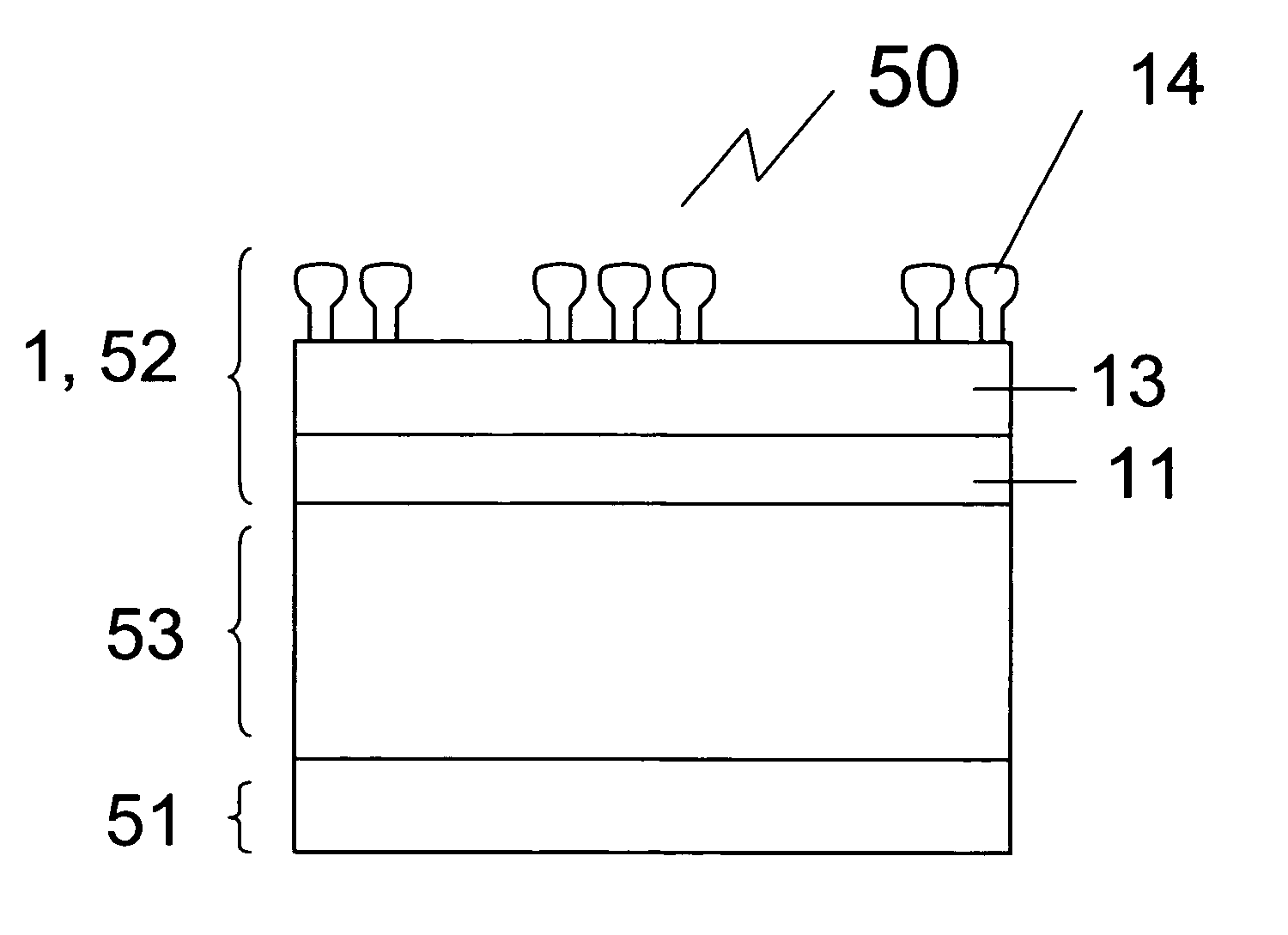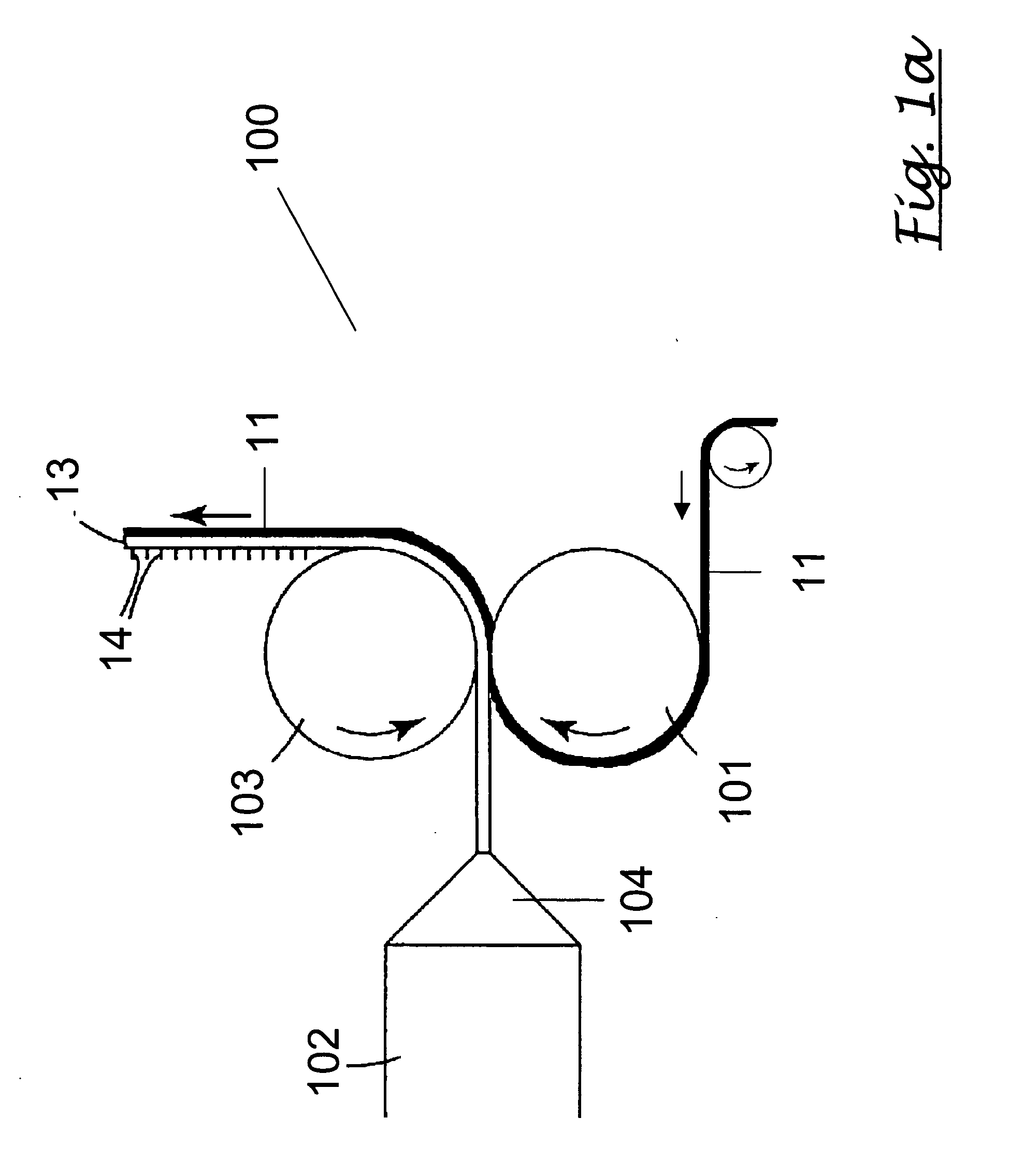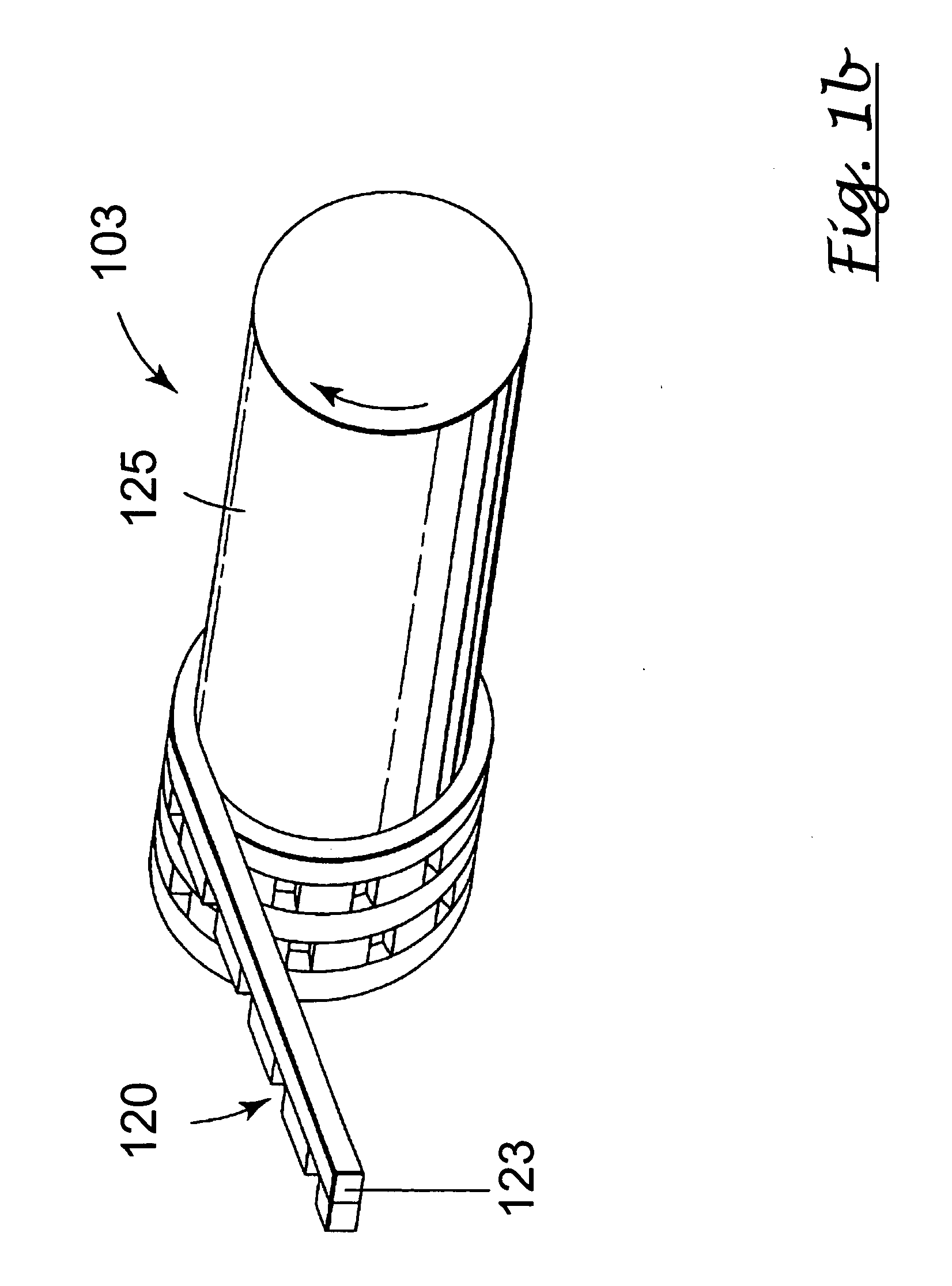Methods of manufacturing a stretched mechanical fastening web laminate
a technology of mechanical fastening and web laminate, which is applied in the direction of snap fasteners, bandages, buckles, etc., can solve the problems that the thickness and/or mechanical strength of the mechanical fastener of u.s. pat. no. 6,484,371 does not always meet the practical requirements of disposable sanitary articles and, in particular, sanitary napkins., and achieves the effect of decreasing the basis weigh
- Summary
- Abstract
- Description
- Claims
- Application Information
AI Technical Summary
Benefits of technology
Problems solved by technology
Method used
Image
Examples
examples 1 , 2
Examples 1, 2 and Cmparative Examples 1-5
Example 1
[0158] A prefabricated fibrous web of the type Amoco RFX which was arranged in 3 tiers, was provided and fed into the nip between a base roll 101 and a tool roll 103 at a speed of 11 m / min. The roll 101 had a silicone rubber surface, and the tool roll 103 comprised cavities 120 for forming pin-type male fastening elements at a density specified in table 1 below. The cavities 120 of the tool roll 103 were shaped to provide pin-type mechanical fastening elements having a height of 446 μm. The two rolls 101,103 had a circumference of 72 cm (roll 101) and 144 cm (roll 103), and a width of about 30 cm.
[0159] Thermoplastic resin DOW 7C05N was extruded and fed in a molten state through die 104 at a temperature of 450° F. (232° C.) into the nip. The nip pressure and nip gap was adjusted so that the thermoplastic web layer 13 formed had a calliper (measured without male fastening elements 14) of about 97 μm. When forming with these adjustme...
example 2
[0163] Example 1 was repeated with the difference that the precursor web laminate 10 was simultaneously biaxially stretched at a stretch ratio of 6.4:1.
[0164] The density of the male fastening elements 14 before and after stretching, the stretch ratios in MD and CD, the overall stretch ratio MD*CD, the basis weight of the precursor web laminate 10 and of the stretched mechanical fastening web laminate 1, and the MD-strength at break and the elongation at break of the stretched mechanical fastening web laminate 1 were measured as described above.
[0165] The MD tensile strength at break of the stretched mechanical fastening web laminates 1 of Examples 1 and 2 are plotted as a function of the base weight of the stretched mechanical fastening web laminate 1 in FIG. 5 (triangles). The MD tensile strength at break vs. the base weight of the stretched hook web layers of Comparative Examples 1-2 (upright squares) and Comparative Examples 3-4 (rotated squares) is plotted in FIG. 5 for compa...
examples 3-5
[0173] In this Example 3, a spunbond nonwoven fibrous web was manufactured. Resin FINATHENE 3825 was processed in an extruder at a temperature of 245° C. and spun through the extrusion head (spinneret) having a total of 512 orifices (16 rows of orifices with each row having 32 orifices). The die had a transverse length of 7.875 inches (200 millimeters). The diameter of each orifice was 0.889 mm and the L / D ratio (=length / diameter) of each orifice was 6. The polymer flow rate was 0.66 g / (hole*min). The cooling air at the spinneret had a temperature of 45° F. (7 C). The average titer of the filaments obtained was 3.3 den.
[0174] The fibrous web layer 11 obtained was thermally bonded using a two calendar rolls having a square bond pattern with 20% bond area. The calendar rolls were held at a temperature of 149° C. and operated at a pressure of 30 psi (206.8 kPa).
[0175] The basis weight of the spunbond fibrous web layer 11 was varied by changing the speed of the conveyor belt forming t...
PUM
| Property | Measurement | Unit |
|---|---|---|
| Thickness | aaaaa | aaaaa |
| Thickness | aaaaa | aaaaa |
| Thickness | aaaaa | aaaaa |
Abstract
Description
Claims
Application Information
 Login to View More
Login to View More - R&D
- Intellectual Property
- Life Sciences
- Materials
- Tech Scout
- Unparalleled Data Quality
- Higher Quality Content
- 60% Fewer Hallucinations
Browse by: Latest US Patents, China's latest patents, Technical Efficacy Thesaurus, Application Domain, Technology Topic, Popular Technical Reports.
© 2025 PatSnap. All rights reserved.Legal|Privacy policy|Modern Slavery Act Transparency Statement|Sitemap|About US| Contact US: help@patsnap.com



